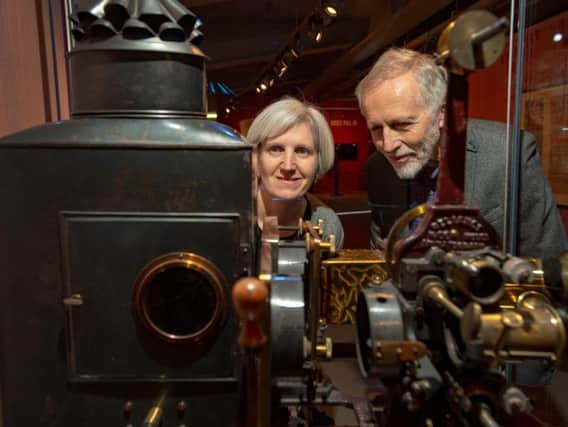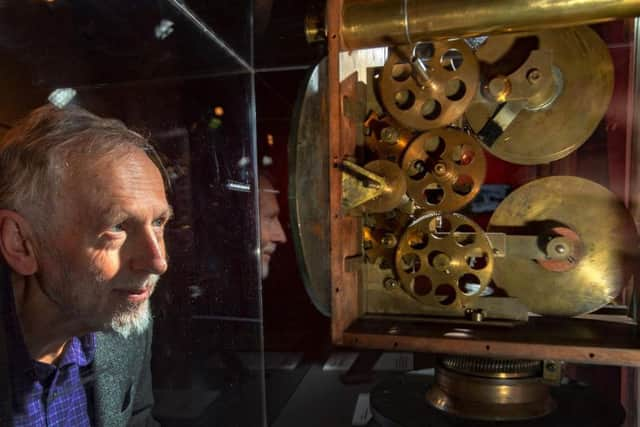Bradford's National Media Museum's new exhibition on 'ignored' cinema pioneer Robert Paul begins


This year marks the 150th anniversary of the birth of Robert Paul, known for building the first commercially successful film equipment in Britain in the 1890s.
Advertisement
Hide AdAdvertisement
Hide AdHis story has remained largely hidden in popular history despite his large contribution to the early film industry, says the museum, but its new free display The Forgotten Showman: How Robert Paul Invented British Cinema, aims to bring it to light.


Inventions of Paul's include the Theatrograph projector, a 35mm camera made and used by him to film the Diamond Jubilee Procession of Queen Victoria in 1897
Toni Booth, Curator of Film, said: “We are thrilled to be highlighting the important contribution of Robert Paul to the British film industry. Paul’s story has remained relatively hidden from the public yet his contribution to cinema as we know it is hard to rival.
"Britain had been at the forefront of a number of new technologies in the nineteenth century, not least in photography and film, but Paul was able to take innovations in film to the next level and to a global audience.”
Advertisement
Hide AdAdvertisement
Hide AdAfter establishing his instrument making company in 1891, Paul became interested in picture devices and was commissioned to make replica Kinetoscopes, the first machines to show moving pictures, originally made by Thomas Edison.
As previously reported by The Yorkshire Post, making these unlicensed copies led to a dispute with Edison, though Paul was not breaking the law - the American inventor had uncharacteristically neglected to take out a patent in Britain.
Paul also took inspiration from the novel The Time Machine by HG Wells and explored the possibility of creating an immersive film experience for audiences, a forerunner to today’s 4D cinema, says the museum.
His ground-breaking equipment would eventually be sold internationally, leading to a number of dazzling firsts in filmmaking and cinema-going.
Advertisement
Hide AdAdvertisement
Hide AdPaul was the first to sell apparatus, films and projection equipment to the wider market, including to French director Georges Méliès, as well as launching Britain’s first film studio, where he produced the country’s largest number of films annually until the end of the 1890s.
He made Britain’s first fiction film The Soldier’s Courtship (1896), frames from which are held in the collections of the museum and a reconstruction will be screened as part of the exhibition.
He also created the first two-shot film in which the camera cut between scenes in Come Along Do! (1898), and the earliest on-screen titling and intertitles, which can be seen in Scrooge, or Marley’s Ghost (1901).
Advertisement
Hide AdAdvertisement
Hide AdDuring his time in the industry he continued to experiment with new techniques, subjects and formats, including distributing films of foreign locations, hand colouring films and capturing panning shots.
Throughout his film career Paul produced more than 800 titles, quitting the business in 1910 and destroying the negatives of many of his films - for which his motive remains a mystery.
He would return to his original career as a pioneer of scientific instrument making and industrialist.
The Forgotten Showman also looks at the work of his contemporaries in the film industry, such as the Lumière Brothers.
Advertisement
Hide AdAdvertisement
Hide AdVisitors can see original objects showcasing innovations in cinema, including Paul’s Theatrograph projector and original frames from one of his earliest works, Incident at Clovelly Cottage, made with Birt Acres in February 1895.
The exhibition has been co-curated with Prof Christie, a renowned film historian and Professor of Film and Media History at Birkbeck University of London.
Prof Christie has worked with artist ILYA to produce a graphic novel telling Paul’s story. His reference book on the subject is also due to be published later this year, titled Robert Paul and the Origins of British Cinema.
He said: “Paul has been ignored for too long in British histories and internationally.
Advertisement
Hide AdAdvertisement
Hide Ad"Given the scale of his innovation and enterprise, it's time we brought these to wider attention, and there's nowhere better than the National Science and Media Museum, which houses some of Paul's surviving equipment.
"It's important too that young people today, living through the digital media revolution, can draw inspiration from knowing that Britain led the original film revolution in the mid-1890s, which is why we’ve also told Paul’s story in a graphic novel, Time Traveller.”
The exhibition is on until March 2020.